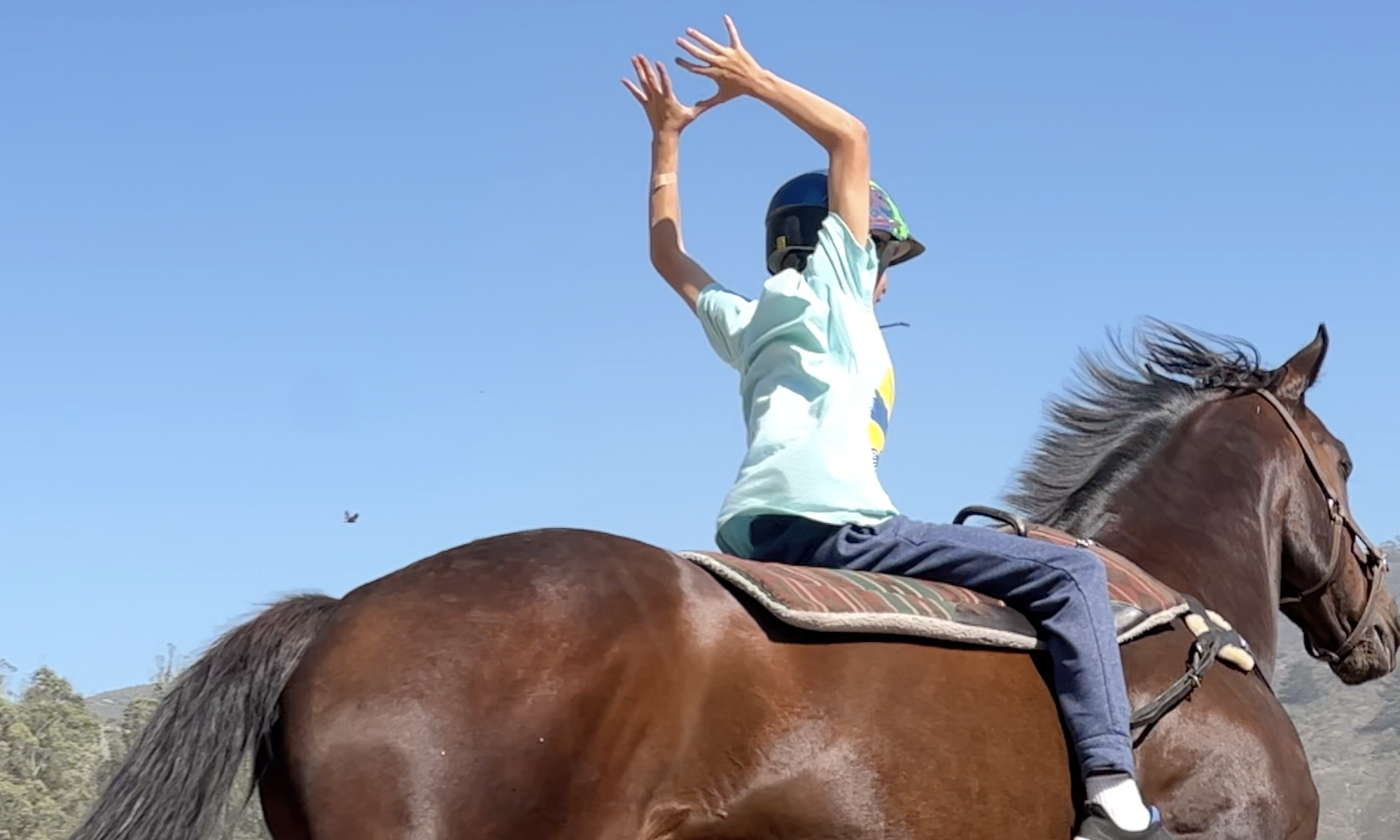Horse Community Pulls
Together for Fun and Charity
October 28, 2008
Polo, arguably the
world’s oldest team sport, reaffirms the special bond between horse
and rider. This weekend, 21 adults and kids alike came together –
most of whom for their very first attempt at the game. The event was
a collaboration of the Polo Training Foundation
(www.polotraining.org), the Horse Park Polo Club
(www.horsepark.org/polo.html) and the Stanford University Polo Club
in a benefit for the Square Peg Foundation. (www.everyonefits.org).
The fantastic Indian
Summer weather of the San Francisco Peninsula graced the Silicon
Valley’s Horse Park at Woodside with clear skies and gentle breezes
for the entire weekend.
“We told everyone
to bring their sense of humor to the clinic and it looks like they
did.” said Chris Dunlap, co-Founder of the Square Peg Foundation
who also rode in the clinic.

“Polo was every
bit as fun, and not nearly as intimidating as I feared” said
Brian Greenen who told us that he had always wanted to try polo and
the weekend opportunity was a gift from his wife.
Instructor Wilbur
O’Ferrall put in two consecutive 10 hour days patiently helping the
riders learn strategy, safety and skills.
“Wilbur does a
great job with the kids. He makes the clinic fun and has great
delivery. My daughter Jennifer, who’s only 7, made some real
progress in this clinic in starting to learn the game” noted
Bonnie Crater of Portola Valley.
In between the 2nd and
3rd sessions, participants had the opportunity to watch the Stanford
Polo Club practice in the arena. Wilbur umpired the practice while
Coach Greg Wolff was on hand to explain the game to a very engaged
audience. Suddenly, the notion of “Man, Line, Ballâ€
started to make sense.
“I just wanted to
thank you so much for doing the polo clinic. Wilbur is so nice and I
have a lot of fun playing with him and everyone.” emailed 12
year-old Farris Scott of Los Altos.
Wilbur was assisted by
Greg Crosta, ranch manager for Square Peg Foundation, who also helped
students in the Horse Park hitting cage. Greg observed that “we
were so lucky to have someone as talented as Wilbur teaching this
clinic.” Talented indeed. Wilbur O’Ferrall is the Field
Director for the Polo Training Foundation as well as a USPA certified
Umpire. A polo player since the age of 10, Wilbur went on to play
college polo for the UC Davis team that won the Pacific Coast
Championship four years in a row. As team captain in 1989, his team
won the National Title. In 1990, Wilbur was chosen Male
Intercollegiate Player of the Year.
The clinic helped raise
$3,000 for the Square Peg Foundation’s adaptive riding program and
horse rescue in Half Moon Bay. At a time when fund raising is
difficult due to the nationwide economic downturn, the timing
couldn’t have been better.
All in all, polo
garnered a new fan club in the San Francisco Bay area and the horse
community demonstrated that it can collaborate to have fun and to
support a cause. Perhaps it’s best said in quoting a famous verse
inscribed on a stone tablet next to a polo ground in Gilgit,
Pakistan: “Let others play at other things. The king of games is
still the game of kings.”
Plans are already
underway for a Spring ’09 youth clinic that will target ages 7 to 17.
For more information, contact the Square Peg Foundation at
650.284.5064 or https://www.squarepegfoundation.org.
photo caption
Instructor Wilbur
O’Ferrall poses with the clinic’s award winners (left to right)
Charlie Campbell, most
improved
Lauren Morgenthaler,
horsemanship award
Jennifer Buja, spirit
award
more photos can be found for download at:
2008 Polo Clinic Photos
or
http://gallery.me.com/joelldunlap#100049
and
http://gallery.me.com/joelldunlap#100051


